Marc Weidenbaum's Blog, page 478
October 6, 2012
Tangents: RjDj’s Retirement, Android Audio-games, Flavin’s Buzz, …
 ¶ Download Before It Expires: The flagship RjDj app of the London-based Reality Jockey firm, home to the Inception and Dark Knight Rises Z+ apps, will no longer be available shortly. It is highly recommended that you download RjDj from the iTunes app store now for your iOS device before the app is retired. Details on the decison at the company’s blog, at rjdj.me. The post mentions that the company’s website will be relaunched on Monday, October 8.
¶ Download Before It Expires: The flagship RjDj app of the London-based Reality Jockey firm, home to the Inception and Dark Knight Rises Z+ apps, will no longer be available shortly. It is highly recommended that you download RjDj from the iTunes app store now for your iOS device before the app is retired. Details on the decison at the company’s blog, at rjdj.me. The post mentions that the company’s website will be relaunched on Monday, October 8.
¶ Android Play Pretty Some Day: The website androidmusician.com is a solid compendium of sound/music apps for the Android operating system. It does a much better job than the Play store of displaying the state of tools for such activity. It’s more product-specific than the more cultural/newsy palmsounds.net, and complements it well.

Recent discoveries via androidmusician.com include the generative tool Orbits (screen shot shown above) and the old-school drum machine RD3 — Groovebox (video below):
The site also has a presence at twitter.com/androidmusician. It’ll be interesting to observe, over time, how these app-discovery services function best, whether the users will congregate at sites focused broadly on OS-specific coverage (Android versus iOS, etc.), focused broadly on usage-specific coverage (music, productivity, fitness), or as is the case of androidmusician.com focused at the intersection of a specific OS and a specific user base.
¶ Boinquarius: One of the best music publications about adventurous sounds is the weekly email newsletter of the San Francisco record store Aquarius. The store is located on Valencia Street, not far from such cultural epicenters as the Borderlands science-fiction bookshop and the McSweeney’s pirate store. Aquarius’ newsletter, which usually pops up in email boxes on Friday evenings, has hooked up with the great Boing Boing (boingboing.net). The latter will be publishing one review per day, culled from Aquarius’ loquacious and knowledgeable crew, who are major fans of Krautrock, experimental electronics, and the darkest of death metal, among other things. Here’s a taste of what’s to expect, a review of the Common Eider, King Eider DVD Sense of Place: “wheezy chordal whirs, the vocals layered and wreathed in echo and reverb, a mysterious chorale that instead of building and then fading out, remains somewhat constant, with different voices receding and resurfacing, each part of the music slipping easily from just organ, to organ and voices, making for a constantly shifting landscape of muted melody and vocal texture.” Visit Aquarius Records (online) at aquariusrecords.org.
¶ Sonoma Sound Art: If you’re in the North Bay (and, that is, if the Bay is the San Francisco one), be sure between now and October 14 to take the time to visit the art gallery on the Sonoma State campus, which is currently showing Sound, Image, Object: The Intersection of Art and Music. The participating artists are Mauricio Ancalmo, Terry Berlier, John Cage, Brian Caraway, Chuck Close, Bruce Conner, Lewis deSoto, Chris Duncan, Jacqueline Kyomi Gordon, Victoria Haven, Robert Hudson, Christopher Janney, Paul Kos, Tom Marioni, Jack Ox, Sarah Rara, Steve Reich, Isabelle Sorrell, Alice Wheeler, and William T. Wiley. Indeed, quite a lineup. I hope to have time to write it up soon.

The Reich are a pair of early compositions, including “Clapping Music”; the Ox a set of visuals combining sheet music and architecture drawings (above right); the deSoto a suspended stereo console; the Duncan an LP record made of paper (above left). A tremendous show.
¶ In Brief: Camera-phone footage of Kronos Quartet opening for Amon Tobin last night: youtube.com; apparently someone threw a bra onstage, a first for the ensemble. … Kronos violinist and founder David Harrington submitted a mixtape to wqxr.org, where it is streaming currently; it features Arvo Pärt and DJ Qbert, Erik Satie and John Oswald. … John Kannenberg (of the Stasisfield netlabel) has started a new blog, phonomnesis.wordpress.com; its focus: “Silent memories of sound, art, time, museums, philosophy, and culture.” A definite add to your RSS reader. … In his excellent soundscrapers.blogspot.com blog, Nick Sowers probes a pressing question about fluorescent light sculpture Dan Flavin: “Spending countless hours, days, and years to get his installations just right, was Flavin using the buzzing sound to inform his work?”
The above is a recording by Sowers of Flavin’s buzz.
Past Week at Twitter.com/Disquiet
Tonight on Fringe the Observers let slip their deep, dark secret — that Rogaine is people! #
Giggle worthy: Brian Eno, still not an inductee in the Rock and Roll Hall of Fame. More thoughts: http://t.co/iZ6yVVjA #
Not a fan of the airborne part of Fleet Week. #
Second line parade in Valencia Street. #
Finding underlined text in an old physical book feels like surveillance. Doing so in a Kindle book feels like you’re being surveilled. #
What a physical site for public speaking looks like mid-construction. http://t.co/Qu8jZfmw #
The Hardly Strictly Bluegrass app’s UI is whittled to priorities: Schedule, Map, Info, Warren. #
Old Marc: “In the future you’ll live where Nick Lowe plays for free every year walking distance from your house.” Young Marc: “Yeah, sure.” #
40th Disquiet Junto project goes out momentarily. This week we’re adding a third part to a Kenneth Kirschner duet. #
Hardly Strictly Bluegrass started looking like people form roots acts so they can be rationalized as participants. Still, a great lineup. #
Alvin Luci(f)er #
Adele’s Skyfall theme song is an odd bird. It’s extravagantly retro in a way the revived franchise is anything but. http://t.co/RgpFqODK #
Waiting for the Diego Bernal album Coffee with the DJ. #
90% of which look like 1976. RT @tperkis: RT @valentinatanni: “10% of all photos ever taken were shot in 2011.” Fortune magazine, 9/24/12 #
Restaurant-data visualization, old-school. Check out the pegboard in this obituary for a Catskills figure: http://t.co/LLwrbREw #
“Can I Get an Accountant” #debatesongs #
“The Corporations in Your Neighborhood” #debatesongs #sesamestreet #
“Zinger! Went the Strings of My Heart” #debatesongs #
#sonifythedebate RT @EvieN: Romney saying “crushing” a lot like he thinks he’s some kind of rock critic. #
This café seems to simply have a Steely Dan CD and a Pink Floyd CD alternating. It’s like cultural whiplash in slow motion. #
Reminder: tomorrow’s @djunto project (the 40th weekly project) will employ the music of Kenneth Kirschner. #
Today’s sound class: The Jingle: market callers → verse; did radio ads invent hit singles; music-licensing dramaturgy; Fringe plays its hand #
Maybe it’s some sort of natural echo, but the foghorns are blasting some seriously attenuated notes this morning. #
RIP, British studio guitarist Big Jim Sullivan (b. 1941), whose discography is bigger than many people’s record collections. #
RIP, singer R.B. Greaves (b. 1943; “Take a Letter, Maria”), whose “Always Something There to Remind Me” was bested on charts by Naked Eyes’. #
Nearing-midnight sounds: refrigerator hum, drone of distant passing car, low level electric whir. #
“I’m gonna play some music and if it’s really annoying lemme know. The emphasis is on ‘really.’” #
Today’s productivity sponsored by ⌘↓ #
Man, I miss Dennis Potter. #
This #MoviesWithKotsay thing is further proof that if I don’t recognize a name on Twitter it is invariably sports-related. #
Fringe final season episode 1 has Walter going on about music’s power. Episode 3 is titled “The Recordist.” I couldn’t be happier. #
If my house could speak it would be saying, “I am not used to being warmer on the outside than the inside.” #
stem swap #
Tuesday noon siren against the rumble and rattle of a microwave. #
I don’t write on food much but my ramen-chef interview & dim-sum overview are in new @SactownMagazine, print only. Latter’s the cover image. #
Video of Benoît Rolland, stringed-instrument bow maker among this year’s MacArthur Fellows (“Genius”) grant winners: http://t.co/aqUKdsCW #
RIP, trombonist Eddie Bert (b. 1922), veteran of bands of Thelonious Monk, Charles Mingus, Stan Kenton, and others: http://t.co/gj7dmOan #
Very excited: the 40th @djunto project will build on the music of Kenneth Kirschner. #
Sang Marvin Gaye’s “Pride & Joy” to my 2-year-old as a lullaby for a month. It transformed into an imagined Social Distortion cover. #
RIP, car-racing commentator Chris Economaki (b. 1920), whose voice “reminded some of a rumbling racing engine”: http://t.co/LHddh73z #
For people who enjoy film scores and confuse Cliff Martinez and Clint Mansell, the universe upped the ante with Nathans Johnson and Larson. #
OK, I now have a humorously sizable number of beta invites to the website art.sy. If you want one, lemme know. #
Oh, those art.sy invites I mentioned yesterday are spoken for. I’ll mention it if I get some more. #
Today’s productivity powered by ⌘Y. #
Whew. Stopped at Shoki Ramen in Sacramento for lunch, and it turned out to be the last day of its tomato ramen. #
October 5, 2012
The Accrual of Everyday Noise

If you accept that memory is a matter of accrual and not of distinct moments, of layers rather than compartments, then the sonic approach employed by Joseph Kramer will have immediate appeal. His Porous Notion: Index Fragments and Interpretations is among the most low-impact of segments heard yet on the superb Radius broadcast/podcast out of Chicago. The Radius series generally emphasizes harsh noises intrinsic to communications systems, but Kramer’s work is most often fragile sounds that filter in and out of focus, leaving the listener to locate chance parallels, chronological interstices, light moire patterns of consonance and incident. Kramer describes the Porous Notion project as follows:
These are private snapshots of home, simultaneously captured on and created by a system consisting of a specialized tape recorder and customized cassettes.
This mechanism, typically employed as a performance instrument, both records onto the custom tape and plays it back in turn. The result is a system that makes a record of the sonic space that also reproduces the recording from moments ago while simultaneously recapturing its own output. The system continuously collects new bits of sound that have either originated in the space, passed in through the window or electrical wiring, or leaked into the electronic circuitry of the device. These new sounds join the already recorded sounds in the accumulating sonic image as certain parts of the spectrum are reinforced while others are smeared away.
Track originally posted for free download at theradius.us and soundcloud.com. Kramer lives in Chicago, where he partners with Noé Cuéllar as part Coppice (futurevessel.com/coppice).
Resolving the Sonic Themes on Fringe
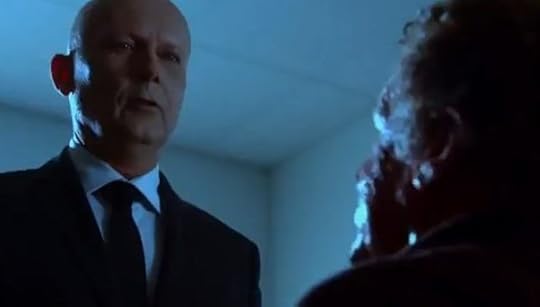 When the final season of the TV series Fringe debuted this past Friday, September 28, there were many pressing questions: Would all our heroes emerge from amber in distant 2036? Would this dystopia look different in any considerable way from all the other recent Hollywood dystopias? Would Dr. Walter Bishop finally remember Astrid’s name? Would the Observers let slip their deep, dark secret — that Rogaine is people!?
When the final season of the TV series Fringe debuted this past Friday, September 28, there were many pressing questions: Would all our heroes emerge from amber in distant 2036? Would this dystopia look different in any considerable way from all the other recent Hollywood dystopias? Would Dr. Walter Bishop finally remember Astrid’s name? Would the Observers let slip their deep, dark secret — that Rogaine is people!?
One thing I was particularly focused on was the show’s employment of music — whether the inventive use of sound in the series would in some way play a substantial role as Dr. Bishop and his family/colleagues did their best to save the future in 13 episodes or less. Sound has been a central part of Fringe science and storytelling, from instants caught like record grooves in the plate glass of a crime scene, to the regular presence of pop music as a symbol of memory (often abetted by the appearance of a phonograph), to murderers incited by a Conet-style numbers station, to the chiptune version of the opening credits music in a flashback episode. And more broadly, attention to the creative employment of sound has been a hallmark of producer JJ Abrams’ production company’s work, notably in the ways various cues from Lost later surfaced in the ill-fated Alcatraz.
And then, shortly into the first episode (with the delightfully unwieldy title “Transilience Thought Unifier Model-11″) of this final season, Dr. Bishop was taken hostage — and into his holding cell walked the Observer known as Windmark. And out of their mouths came as close as an Abrams production has ventured toward providing a conspicuous description of the role sound plays in his work. In the scene transcribed here, Windmark can listen in on Bishop’s thoughts, and he hears some music Bishop is attempting to summon up.
Windmark: I don’t know why you’re alive. … Oh, you’re trying to think of music. You … miss … music.
Bishop: There’s not a lot of it here.
Windmark: We tolerate it, but it’s merely tones, rhythms, harmonic vibrations. I don’t understand …
Bishop: Mostly it amazes me. Music helps you shift perspective, to see things differently if you need to.
Windmark: See things … like “hope.”
Bishop: Yes, very much like that.
Windmark: But there is no hope for you. Nothing grows from scorched earth.


Later in the episode, Bishop is saved from captivity. He wakes next to his patient assistant, the agent Astrid, and the first thing he says to her, after inevitably mangling her name (“Afro?”) is, “Do you have any music?” Later, after some more rest, Bishop’s spirits rise, in part because of colorful lights that dance on his face. These turn out to be the reflection of some broken CDs hanging in a makeshift mobile in the street outside the building where he’s resting. He wanders into the street, finds a CD hand-labeled “Trip Mix 6,” wipes it off, and pops it into a CD player (in an abandoned car that still happens to have battery power). Out comes Yaz’s “Only You,” and Bishop smiles. Through the windshield he spies something flowering in the dirt — so much for things not growing in scorched earth.
Given how distressed Bishop was earlier, it’s particularly comforting to see him not only at peace but pleased. And given how often the phonograph has been used to signify how out of touch he is with the modern world (echoing similar usage in Lost), it’s interesting that it’s not a vinyl record but a CD that plays a role in reviving him. That flower isn’t the only thing that’s maturing.
Is the Rock and Roll Hall of Fame Getting Electronically Mindful?
The just-announced 2013 nominees for induction into the Rock and Roll Hall of Fame are an especially technologically-oriented bunch. It’s a generation increasingly marked by the ever-rising influence of technology at a practical, day-to-day level in popular music.
The 2012 inductees were certainly tech-oriented in their own right; the 17 inductees last year included three production legends (Tom Dowd, Glyn Johns, Cosimo Matassa) as well as sample-innovators the Beastie Boys.
The widespread electronic nature of this year’s list, however, goes far beyond last year’s showing. The Hall of Fame announced the nominees yesterday morning, October 4, and with this cohort the technological is as much an aesthetic matter as it is one of technique. Of course, these are just the nominees, not the inductees. Quickie rules cheat sheet: “To be eligible for nomination, an individual artist or band must have released its first single or album at least 25 years prior to the year of nomination.” In a couple years Nirvana, whose Bleach was released in 1989, will be eligible, and the ensuing grunge years will provide plenty of rockist comfort for the Hall of Fame. For balance, industrial act Nine Inch Nails, whose Pretty Hate Machine was released in 1989, will be eligible the same year. Brian Eno, it’s worth noting, is not yet a Hall of Fame inductee, despite his production of such major-league inductees as Talking Heads and U2.
This year the nominees include the following: Two early rap stalwarts, N.W.A and Public Enemy, are sure to draw attention to their production teams, notably Dr. Dre and the Bomb Squad. Donna Summer is nominated; her collaborations with producer Giorgio Moroder are major milestones in pop music’s adoption of a purely electronic instrumental foundation (the disco single “I Feel Love” from her 1977 album, I Remember Yesterday, is widely considered a watershed moment in this transition). The ensemble Chic, although quite grounded in r&b virtuosity, was very much a studio endeavor for co-founder Bernard Edwards; the group’s tight, mechanized recordings — brittle hand claps, lockstep tempos — set a template for the more willfully synthetic dance music to come.
And then there’s the prog-rock vote: it centers on Rush, but should consider as early prototypes the adventurous early hevay metal band Deep Purple, whose sound was deeply shaped by Jon Lord’s organ, and the art-rock outfit Procol Harum.
Even the Meters deserve some consideration from this perspective, given the extent to which the rhythm ensemble’s modern reputation owes much to the frequent sampling of their back catalog.
In fact, of the 15 nominees announced today, just six are difficult to situate as electronic fellow travelers: the Paul Butterfield Blues Band, Heart, Joan Jett and the Blackhearts, Albert King, the Marvelletes, and Randy Newman.
Again, these are the nominees. The actual inductees will be announced soon, once voting has been tallied. Between five and seven of the nominees are expected to be inducted, and they will share the limelight with additional figures in the form of the Ahmet Ertegun Award (for non-performers), a batch of “early influences,” and the “Rock and Roll Hall of Fame Award for Musical Excellence” (which along with the Ertegun award is generally where producers get the nod). It’s quite possible that the inductees will be selected primarily from the gang of six listed above who have little in the way of a technological sensibility.
Read the annotated list of nominees at the Rock and Roll Hall of Fame’s website, rockhall.com/pressroom.
And consider voting for those you consider most worthy. This is the first year that the Hall of Fame is factoring in a “fans’ ballot”: rockhall.com/get-involved.
October 4, 2012
Disquiet Junto Project 0040: Music + 1
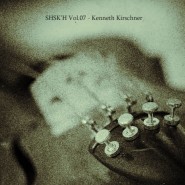 Each Thursday evening at the Disquiet Junto group on Soundcloud.com a new compositional challenge is set before the group’s members, who then have just over four days to upload a track in response to the assignment. Membership to the Junto is open: just join and participate.
Each Thursday evening at the Disquiet Junto group on Soundcloud.com a new compositional challenge is set before the group’s members, who then have just over four days to upload a track in response to the assignment. Membership to the Junto is open: just join and participate.
The assignment was made in the evening, California time, on Thursday, October 4, with 11:59pm on the following Monday, October 8, as the deadline. View a search return for all the entries as they are posted: disquiet0040-kirschnerplus1. (There are no translations this week.)
These are the instructions that went out to the group’s email list (at tinyletter.com/disquiet-junto).
Disquiet Junto Project 0040: Music + 1
The latest release from Kenneth Kirschner is a series of duets for himself on piano and Tawnya Popoff on viola.
For this Disquiet Junto project you will add your own performance to one of the duets. This will turn it, in effect, into a trio.
You cannot change the existing audio, except to the extent that you can elect to trim it to a more manageable length, in which case you might choose to fade in and out.
The Kirschner release is titled June 5, 2012, and it consists of three parts. You’ll be working on the third part, which is titled “June 5, 2012 – iii.” It’s available for download at the netlabel shskh.com, where the album is the 7th (and most recent) of the label’s releases.
Deadline: Monday, October 8, at 11:59pm wherever you are.
Length: Your finished work should be between 2 and 11 minutes in length.
Information: Please, when posting your track on SoundCloud, include a description of your process in planning, composing, and recording it. This description is an essential element of the communicative process inherent in the Disquiet Junto.
Title/Tag: When adding your track to the Disquiet Junto group on Soundcloud.com, please include the term “disquiet0040-kirschnerplus1” in the title of your track, and as a tag for your track.
Download: For this project, your track should be set as downloadable, and allow for attributed remixing (i.e., a Creative Commons License permitting non-commercial sharing with attribution).
Linking: When posting the track, be sure to include this information:
The source audio for this track is part three of the Kenneth Kirschner album June 5, 2012, which features Kirschner on piano and Tawnya Popoff on viola. The album was released in September 2012 on the shskh.com netlabel, where it is available for free download.
More on this 40th Disquiet Junto project at:
http://disquiet.com/2012/10/04/disqui...
More on Kenneth Kirschner at:
http://www.kennethkirschner.com/
More details on the Disquiet Junto at:
Tangents: Alvin Luci(f)er, Eno Automata, Sound Art.sy …
¶ EVRP (Electronic Voice Recognition Phenomenon): The novelist Richard Kadrey made the following post on Facebook earlier this week. It’s reprinted by permission:
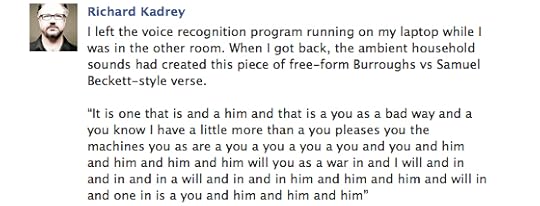
It’s a fascinating — especially because it’s unintentional — spin on Alvin Lucier’s classic “I Am Sitting in a Room.” The incident is particularly tasty if you’re familiar with Kadrey’s novels. His now four-volume Sandman Slim series, which deals with a hell-weary anti-hero, is rich with pop-song (and motion-picture) references to devilish activity. It seems all too perfect that his software would come to recognize a sentient presence in his absence. The EVP, or Electronic Voice Phenomenon, movement seeks to locate the semblance of speech in the noise of static. Kadrey experienced a step further into the metaphysical void: the less perceptible noise of a more generic sort, the everyday room tone. (I’ve known Kadrey for two decades now. He wrote a long profile of Ministry for me when I was an editor at Pulse! magazine and participated in a 2005 discussion here about Brian Eno’s album Thursday Afternoon.)
¶ Composition(al) Rules: Video below of the latest iOS app, Scape, from Brian Eno and Peter Chilvers:
The generativemusic.com website says of the app: “Can machines create original music? Scape is our answer to that question: it employs some of the sounds, processes and compositional rules that we have been using for many years and applies them in fresh combinations, to create new music.” The approach and timing are intriguing since Eno referenced cellular automata in regard to the art installation that led to his forthcoming Lux album on Warp Records. The app and album should be considered in tandem.
¶ Sound Art.sy: The art.sy website has just two artists associated with the “gene” (or genre, or category) for “sound art” (Zimoun and Tom Marioni). It does, however, have a “tag” for “tape” that includes Christian Marclay, Michael Craig-Martin, and a handful of others. The site is still in beta. I have a heap of invites. If you’re interested, shoot me an email to request one.
¶ Far Afield Recordings: The “remix ←→ culture” project on Kickstarter has an interesting take on not only financial models but cross-cultural collaboration as well. The proposed iPad app makes source recordings (initially from Morocco) available for remixing, and channels funds back to the original musicians.
More on the project, led by Hatim Belyamani, at remix-culture.com.
¶ Love the Player (Piano): Also on kickstarter.com, Other Minds is looking to fund “the largest festival in North America dedicated to the life and music of the genius composer Conlon Nancarrow,” Maverick of the player piano Nancarrow would have turned 100 this year, in the shadow of John Cage’s centenary — not to mention Alan Turing’s and, for good measure, Chuck Jones’. For $25, the second lowest level of participation, you’ll get audio downloads of the three-day festival, and a copy of the catalog.
¶ New Meaning to “Co-Op Mode”: There’s a remix contest sponsored by Halo 4 to rework music from the latest iteration of the game. The source material is by Halo 4 composer Neil Davidge, who’s worked extensively with Massive Attack: halo4remix.com.
¶ Glass(re)works: The NPR website is streaming remixes both by Beck and by Tyondai Braxton of the music of Philip Glass. More on the forthcoming Philip Glass – Reworked album at thekorarecords.com. Also contributing are Amon Tobin, Cornelius, Dan Deacon, Johann Johannsson, Nosaj Thing, Memory Tapes, Silver Alert, Pantha du Prince, My Great Ghost, and Peter Broderick.
Dreams of Guitar Ambience Past
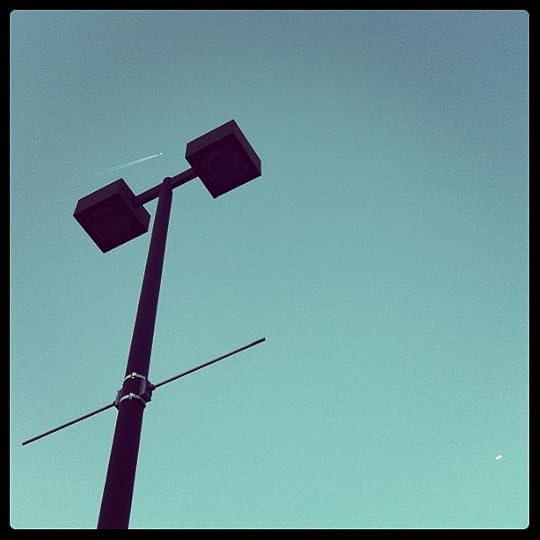
Adam Worthan titled his five-minute medley of tremulous strings and undulating drones “The Echo of Yesterday,” and when posting it to his SoundCloud account he affixed to it more than its fair share of descriptive tags. These are weighted toward genre (ambient, electronic, soundtrack, soundscape, drone, shoegaze, dreamy, space, experimental) but also emphasize technique and technology (ambient guitar, loops, reverb, guitar ambient). And then there are these three: emotional, nostalgia, nostalgic. The emphasis on the past is emphatic, but the question is: Which past? Is it a personal past, either individual or projected/shared, that the piece probes, or is the past the reservoir of techniques that he embraces, explores, and pushes through toward his own unique musical voice? Perhaps it is both at once.
Track originally posted for free download at soundcloud.com/adamworthan. More on Worthan, who is based in Atlanta, Georgia, at adamworthan.bandcamp.com. The above image, from Worthan’s instacanv.as account, accompanied the song (albeit in black and white) when it was posted to his SoundCloud account.
October 3, 2012
Natalia Kamia’s Piano Edits & More (MP3)
Natalia Kamia of Gothenburg, Sweden, is racking up some fascinating listening on her soundcloud.com/kamikuma account.
“Gunpowder Tea for One” sounds nothing like a piano. It sounds more like someone triggering explosions on a galavant across an open field. The explosives association may in large part be due to the term “gunpowder” in the title, but the power of words only fuels associations so far — the brief explanatory note states that the track is a “piano recording on steinway converted,” yet even allowing for a broad meaning of the word “converted,” the presence of a Steinway piano here seems quite distant.
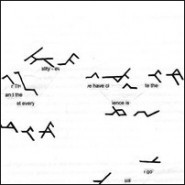 The piano, albeit at high speed, is more recognizable in “Invisible Study X,” which was included along with a bio of Kamia at the invisibledialogues.org site, which documents an installation in which she participated in early 2011. The piece is the result of piano edits executed in response to an original graphic score, a detail of which appears to the left.
The piano, albeit at high speed, is more recognizable in “Invisible Study X,” which was included along with a bio of Kamia at the invisibledialogues.org site, which documents an installation in which she participated in early 2011. The piece is the result of piano edits executed in response to an original graphic score, a detail of which appears to the left.
“Aeolian Hang of Ecut, Pasodoble Chimes” is describes in a brief liner note as “audiomulch recording of sample fragments looped simultaneously- chords and melodies hunt.” It’s one of several such experiments in muted metal percussion, some more linear than others. The extent of the processing limited, leaving an unembellished sound.
More on Kamia at nataliakamia.blogspot.com.
October 2, 2012
Vsls Live from Poughkeepsie (MP3)

It starts with an elegant layering of string sounds amid the slowly receding yaps of an audience that is shifting from enthusiasm to alertness (from, one might say, “scene” to “heard”). It ends like what could be a truck filled with glass plowing in slow motion into a thick wall of concrete (MP3). In between it gains momentum, the opening half a study in the pleasures of razor tones until it pivots, quite suddenly, into overdrive — as if the loops were being refracted in the countless mirrors at the end of The Lady from Shanghai.
Download audio file (vsls_092212_pcpk.mp3)
The piece is by vsls, a working name of Travis Johns, who did his undergraduate study at the Oberlin Conservatory of Music and graduate at Mills College. It’s a live performance recorded live at Project Catalyst in Poughkeepsie, New York,
performance on September 22 of this year. Those opening sounds aren’t merely string noises; they are raspy with static, bits of feedback subsuming them, emanating from them, while additional sounds suggest bits of metal clanging lightly.
Audio made available for free download at archive.org and woundedsquid.blogspot.com. More on Johns, who makes electronic music devices in Costa Rica, at vauxflores.com and travisjohns.bandcamp.com. Catalyst doesn’t appear to have a website, simply a presence on Facebook.
(The above image isn’t from the Catalyst show. It’s from a Brooklyn concert that Johns played last year.)



